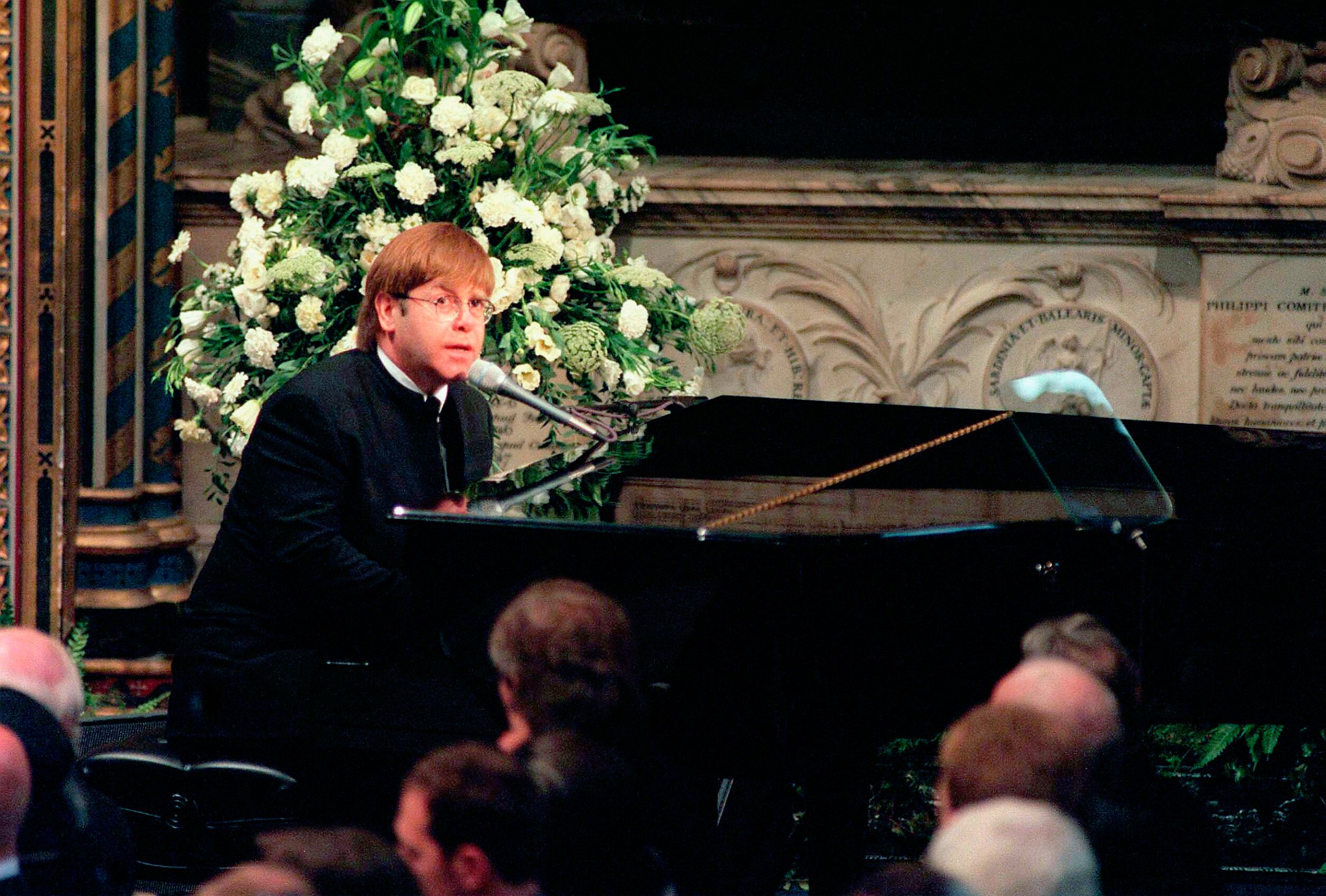
If songs like “Princess,” “The King Must Die” and “Snow Queen” are any indication, Elton John has a deep fascination with royalty. In Me, his newly published autobiography, John shows that his interest goes beyond the imaginary: he had many strange and fascinating interactions with members of the royal family over the years, from Queen Elizabeth the Queen Mother to Princess Diana. His writing breathes humanity into a family almost always shrouded in rigid formality.
John’s relationship with the royal family began in the ’70s, when he was invited for dinner at Kensington Palace by Princess Margaret, who was a huge fan of music and musicians. But the dinner quickly devolved into a scene of marital strife between Princess Margaret and Lord Snowdon, who would divorce in 1978. “He stormed in midway through the meal and literally snarled ‘Where’s my f-cking dinner?’ at her,” John writes. “They had a huge row, and she fled the room in tears.”
John’s growing stature in British culture — combined with the fact that he lived close to Windsor Castle — made his royal interactions more and more frequent. In the late ’70s, Prince Philip made fun of the bright yellow Aston Martin that John frequently drove around the neighborhood: “Makes you look like a bloody fool. Get rid of it.” The Queen Mum came over for a meal, after which they danced to her favorite record, an old Irish drinking song called “Slattery’s Mounted Fut.”
John had an even more memorable encounter with the Queen Mum’s daughter, Queen Elizabeth II, of whom John says, “In private, she could be hilarious.” At Prince Andrew’s 21st birthday party at Windsor Castle, John watched her reprimand the Viscount Linley about a familial matter: “The Queen lightly slapped him across the face, saying ‘Don’t’ — SLAP — ‘argue’ — SLAP — ‘with’ — SLAP — ‘me’ — SLAP — ‘I’ — SLAP — ‘am’ — SLAP — ‘THE QUEEN!’” John writes that when the Queen saw him watching, she winked at him before moving on.
But the most meaningful royal relationship John had was with Princess Diana. The pair met at the same party, and John immediately felt a kinship. “She was blessed with an incredible social ease, an ability to talk to anybody, to make herself seem ordinary,” he writes. He did notice, however, that despite her disdain of royal formality, she maintained a distant and frosty relationship with her husband, Prince Charles.
As the pair spent more time together, John many times bore witness to what he termed as the “Diana Effect” on men. At one dinner party, he observed as Richard Gere and Sylvester Stallone both became smitten by her and then nearly fought each other before getting disentangled, with Gere prevailing and Stallone storming off. “I never would have come if I’d known Prince f-ckin’ Charming was gonna be here,” John remembers Stallone grumbling. “If I’d wanted her, I would’ve taken her!”
“She could bring Hollywood superstars to the verge of a punch-up over her attentions at a dinner party, like a couple of love-struck teenager idiots,” John writes.
The pair fell out after Diana dropped out of writing the foreword to a rock photography book that gave its proceeds to the AIDS Foundation. “I think Buckingham Palace didn’t like the idea of a member of the royal family having anything to do with a book that featured shots of naked guys with towels draped around them,” John writes. They reconciled at Gianni Versace’s funeral — but it was to be the last time they saw each other, as Diana died in a car crash a few weeks later.
At Diana’s funeral, John sang a new version of “Candle in the Wind” with reworked lyrics by his writing partner Bernie Taupin. (“You called out to our country, and you whispered to those in pain,” the lyrics went.) When he recorded it, the song became an international bestseller, staying at number one on the Billboard Hot 100 for 14 weeks.
But John wasn’t happy with the song’s success. “Why would anyone want to listen to it?” he writes. “It seemed unhealthy to me: morbid and unnatural. I really didn’t think it was what Diana would have wanted.”
John’s relationship with the family continues up through the present day. In April, he defended the Prince Harry and Meghan Markle after they were publicly criticized for using a private plane. “I feel a profound sense of obligation to protect Harry and his family from the unnecessary press intrusion that contributed to Diana’s untimely death,” he wrote on Twitter.
More Must-Reads from TIME
- Donald Trump Is TIME's 2024 Person of the Year
- Why We Chose Trump as Person of the Year
- Is Intermittent Fasting Good or Bad for You?
- The 100 Must-Read Books of 2024
- The 20 Best Christmas TV Episodes
- Column: If Optimism Feels Ridiculous Now, Try Hope
- The Future of Climate Action Is Trade Policy
- Merle Bombardieri Is Helping People Make the Baby Decision
Contact us at letters@time.com